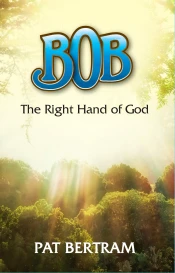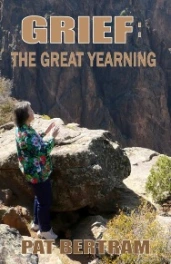When I asked Cliff Burns, author of So Dark the Night, if he’d like to guest host my blog, he responded that he’d rather have a discussion. I was thrilled. I enjoy talking about writing, but even more than that, I love learning how other writers approach the craft. This is the third and final part of the discussion.
BERTRAM: National Novel Writing Month is coming up, and its adherents are a heated bunch — they don’t seem to like anyone questioning the process. You’re one of the few I’ve come across who speak out against it.
BURNS: I know people have really taken me to task for lambasting NaNoWriMo and its adherents. To me, the concept is a stupid one — write a novel in a month, give me a break! It devalues the professionalism of the vocation, the enormous amount of time and energy authors put into learning and developing their craft. Anyone can claim to be an “author” or “artist” — the arts seem to condone this sort of thing. I suppose I’m an elitist and a snob. It took me ten years of daily writing and scores of credits before I was able to call myself a writer without feeling self-conscious and phony. As I wrote in a recent post: you’re not a plumber if you unclog a toilet and you’re not an electrician if you screw in a light bulb. Each of those trades requires training, a lengthy apprenticeship period. Why should the arts be any different?
BERTRAM: I can’t even imagine what it would take to write a novel in a month. The writing of a novel takes me a year, and some of the research I’ve done has taken more than that. But then, I am not an intuitive writer. I have to drag each word out of hiding and find its place in the puzzle that is a novel. I suppose two types could write 50,000 words in a month — the intuitive writers who spew out words, and the logical writers who have the whole thing outlined before they begin. Me? I fall somewhere in the middle. I so hate tossing aside my hard work that I habitually rework my writing as I write. (Though I have rewritten one of my novels four times, and deleted 25,000 words from another..)
BURNS: My first drafts come out in a huge gout of words — I try to get it all down as quickly as I can. I think I wrote the first draft of one of my novels in 45 days. But . . . then I spend the next eighteen months (or more) revising, editing, polishing, going over each syllable with painstaking care. I outline a little bit, scribble down character names, some ideas for certain scenes, but that first draft usually becomes the outline I work from. It’s incredibly labour-intensive but the only method that works for me.. I would say only a few words or phrases survive from my first draft by the time I’m finished. It’s only a roadmap, nothing more. And I never grow attached to a character or scene — “everything in service to the story”, that’s my motto. All else is expendable.
BERTRAM: I was going to ask if you push for a daily word count, but you mostly answered that. So how about: do you write at the same time and in the same place and in the same manner (computer, pen/paper) everyday?
BURNS: My office is right across from our bedroom so it’s the first place I visit in the morning. Moving things around on my desk, gearing up for the day. I play lots of music to get warmed up, start the juices flowing. Commence work when my family leaves for school or work, break for lunch, maybe tea later in the day, popping downstairs when my family returns. We have supper together and then often it’s back to the office to square things away, tie off loose ends and set things up for the morrow.
BURNS: First drafts are almost always handwritten (even my 450+ page novel So Dark the Night) and then tapped into my ancient Mac computer with fingers swollen and aching from arthritis or nerve damage. Twenty-five years or more of three or four-fingered typing has taken its toll. How does that compare to you? I hope you’re a lot saner in your work habits than I am. You strike me as a pretty levelheaded individual . . . or am I wrong?
BERTRAM: You’re not wrong, but when it comes to writing, I’m not so much level-headed as undriven. Each of the words has to be dragged out of me, an act of will. And sometimes the words are not there. But I don’t sweat it; I edit, I blog, I promote. And when the words come, I’m ready. I also write handwrite my first drafts — I think one reason for the crap published today is that authors lack the brain/finger/pencil/paper flow. I read once that the only place other than the brain where gray matter is found is on the fingertips. May or may not be true. But it feels true.
BERTRAM: When does a writer become an author? I used to think it was when a writer got published, but now that anyone can get published, it’s not much of a criterion. Nor does a writer become an author when they can make a living at it; good writers seldom can. The hacks usually do.
BURNS: A writer writes. That’s it. Every single day. Publication credits are meaningless (especially today) and critical acclaim doesn’t amount to a hill of beans. Sales figures? Well, Dan Brown sold millions, as did Stephanie Meyer and, in my view, their work is sub-literate. he way you can tell is read it out loud. Just one page, any page will do. If you’re not crying with laughter after a couple of paragraphs, it’s time to get a funny bone transplant.
BURNS: Aspiring authors: apply yourself to the task of writing with discipline and courage and perseverance. I love the quote from Nabokov about “writing in defiance of all the world’s muteness”. Not just scribbling the same thing, working to the same formula but trying to stretch your talent as far as it will go . . .. and beyond. Working outside your comfort zone, writing prose that scares and intimidates you. But it’s the daily practice that, to me, reveals those who are serious and distinguishes them from the wannabes I loathe.
BERTRAM: is possible to become an author people will read even without the “help” of corporate publishing?
BURNS: I self-published my first book back in 1990 — it sold out its print run in less than 5 months and earned praise from various reviewers, as well as Governor-General Award-winning writer Timothy Findley. I started my blog, “Beautiful Desolation” 18 months ago and since then I have ceased submitting work to other venues — my work (including 2 novels) now goes directly to my blog and I’ve never been happier. Corporate publishing is dying, the profit margins aren’t big enough and soon the Big Boys will be dumping their publishing arms. The new technologies allow writers to have access to readers around the world–I only wish this stuff had been around ten years ago, it would have saved me a lot of frustration and fury. Kindle? E-books? POD? Why not? Anything that allows the writer to get a bigger slice of the pie is all right with me…
BERTRAM: How did you promote your self-published book in 1990? What would you do differently today?
BURNS: That was my book Sex & Other Acts of the Imagination and a lot has changed since then. For one thing there are far fewer independent bookstore and those were the folks who sold the lion’s share of Sex. I took copies with me everywhere I went–Saskatoon, Regina, Edmonton, Vancouver, Toronto–approached every indie bookstore I could and sold them (usually on consignment). The vast majority of those book stores are gone now, sad to say. Sex cost $3000 to publish, my second collection, The Reality Machine, cost $6000 in 1997. Nowadays print-on-demand might save me some money–that’s something I’m looking into, likely using Lulu.com. Can’t quote you any price for that (as yet) but I’ll be using my blog and the vast reach of the internet to spread the word..
BERTRAM: Is there one website more than another that brings you readers? Any suggestions for authors just starting to promote?
BURNS: Hmmm . . . well, I try to reach out to sites that discuss writing and publishing and I have a RedRoom authors page. I comment on a lot of blogs, replying to posts that amuse or annoy me for one reason or another. My blog, Beautiful Desolation, is my primary promotional venue, to tell the truth. I’m also on LibraryThing, a place where bibliophiles can hang out and chat. They don’t encourage “blog-pimping” (a term I loathe, by the way), which is ridiculous because often I’ve written a lengthy post on “Beautiful Desolation” regarding a point under discussion. So I refer people to the post anyway and slap down anyone who dares accuse me of self-promotion.
BERTRAM: Thank you for taking the time to talk with me.
BURNS: Interesting the similarities and differences in our approaches and processes, our views toward the life and business of writing. Thanks for the discussion, it helped me better define and synthesize my thoughts.
Writing Discussion With Cliff Burns — Part I
Writing Discussion With Cliff Burns — Part II
 Pat Bertram is the author of Grief: The Inside Story – A Guide to Surviving the Loss of a Loved One. “Grief: The Inside Story is perfect and that is not hyperbole! It is exactly what folk who are grieving need to read.” –Leesa Healy, RN, GDAS GDAT, Emotional/Mental Health Therapist & Educator.
Pat Bertram is the author of Grief: The Inside Story – A Guide to Surviving the Loss of a Loved One. “Grief: The Inside Story is perfect and that is not hyperbole! It is exactly what folk who are grieving need to read.” –Leesa Healy, RN, GDAS GDAT, Emotional/Mental Health Therapist & Educator.


 s. No pants, but I did find a lovely blue fleece jacket in my size. (I knew it was my size because I have a couple of others in different colors.) It was on sale for 40% off, and since it was (accidentally on my part) the weekend after Thanksgiving, I got 25% off the 40% off. Even with shipping and tax, the total bill for the $65.00 fleece came to less than my dividend, so it was free to me!!
s. No pants, but I did find a lovely blue fleece jacket in my size. (I knew it was my size because I have a couple of others in different colors.) It was on sale for 40% off, and since it was (accidentally on my part) the weekend after Thanksgiving, I got 25% off the 40% off. Even with shipping and tax, the total bill for the $65.00 fleece came to less than my dividend, so it was free to me!!
 It still don’t think it fair that both groups do what comes naturally, but if we in the non-athletic group want to achieve better health or better muscle tone, we have to put ourselves through a regimen that is not only beyond our meager physical resources, but sometimes downright painful. I don’t believe the good things in life should be accompanied by pain, especially because if it’s a pain we cannot like, we will soon give up.
It still don’t think it fair that both groups do what comes naturally, but if we in the non-athletic group want to achieve better health or better muscle tone, we have to put ourselves through a regimen that is not only beyond our meager physical resources, but sometimes downright painful. I don’t believe the good things in life should be accompanied by pain, especially because if it’s a pain we cannot like, we will soon give up.








